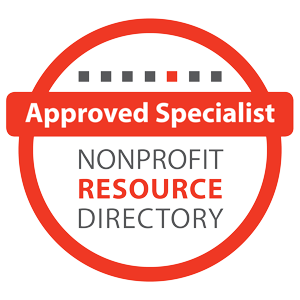4 Principles For Creating Commitments Instead of Donations
I believe that a well-told story is one of the most effective ways to illustrate an important point. Here’s a good one to get us started:
Westby Associates is often asked to assist in executive searches. During a recent search in a Pacific Northwest community I was interviewing a ‘referral ambassador,’ what we call the community leaders we recruit to help discover local talent. During his interview, one of these community leaders was telling me that he, sadly, had no one within his community’s development field that he could refer for a particular Vice President of Advancement position.
He went on to describe the development people he encountered – which were numerous – as, “mostly interested in my money, and not a lot of fun to talk to. They lack imagination and creativity in their work and are so busy trying to get to my wallet that they’ll never get to my bank account.” “No,” he told me, “you’d be better off getting someone fresh – with no development experience – who’s a people person. Someone who wants to put up with an old codger like me.” Then he looked at me with a sparkle in his eye and said sincerely, “A person who really wants to put up with me – not who fakes it. Do you get the difference?” Oh I get the difference, and hopefully by the end of this article you’ll see the difference as well.
1: BE IN THE PEOPLE BUSINESS FIRST
That’s largely due to the nature of our work. Development staff are in a fishbowl, which is to say their work is highly visible. And most often the metric that gets measured is how much. It can become a numbers game: the number of donations and the numbers those donations add up to. I can see that referral ambassador covering his wallet with his hand and smiling. “Too busy trying to get to my wallet.” So how do we elevate our game? How do we get past donations and to commitments? Past what’s in our wallets, to what’s in our bank accounts – and beyond?
2: DEFINE YOUR DEVELOPMENT VISION
Now he was a tenured professor who had ascended the presidency through the academic track, but it was at this point where I became the teacher. It was a short, and careful lecture that took the form of a question. “I’m not sure that you understood what I was asking,” I said. “I suppose I’m interested in why you need a new science wing?”
“Oh,” he said. “That’s easy. We need to meet a huge need in the region and in the whole country, for that matter, for entomologists.” And he went on to make a beautiful case for the science wing. “That is what we call a vision.” I replied after he finished. “The science wing is just a means for accomplishing the vision.” “Ahh,” he said with a smile. “I get it.” And he did get it. The message and – ultimately – the science wing.
Mission Statements. Vision Statements. Value Statements. Case Statements. We use this vernacular to describe ourselves in the organizational world. I find that in the nonprofit world we often misuse them. In our work, we routinely encounter mission statements written through rose colored glasses that inflate an organization’s purpose, or vision statements that merely enhance the mission statement.
A mission is who you are and what you do. A vision is – or at least should be – where you are going. A proper vision should be more than an internal document. It should be a community impact statement. It should answer two questions: First, who is our market in five or ten years? And second, what will they need from us? If our mission is who we are and the vision is where we are going, our priorities, our projects – whether they be bake sales or capital campaigns – are just a mode of transportation to get you to your vision. In this metaphor your values – your set of beliefs – act as guideposts.
3: SET THE RIGHT PRIORITIES
Having more than 3 or 4 priorities means that you have none.
To keep from majoring in the minors, I suggest three to four priorities to provide sufficient focus. At a sub-strata level of course, departments and programs within an organization should have their own priorities. Priorities are needs, not wants. They are mission and vision centric, critical to success. But remember: the priorities are only the means of transportation.
When you tell family or friends about an upcoming vacation, do you tend to focus on the destination of the transportation? Now, how you get there is interesting for sure. It needs to be safe, affordable, practical, hopefully comfortable. But it is usually only important in its relationship to the destination. Our vision is a destination and it should be exciting. It should also lead to a question about the transportation. “Going to the Grand Canyon, huh? How ya gonna get there?” “Flying to Flagstaff and renting a car.” “Oh, we did that trip once,” and off you go on a conversation, not a presentation.
The case statement should not be a cumbersome sales pitch about a project. It ought to sound more like an exciting conversation about vacation plans. The more that it does, the more you will separate yourself from the wallet grabbers of the world. And the more you separate yourself from bad, or even average practitioners, the more you will separate your organization from theirs.
4: CREATE SEPARATION
We need to pull on our running shoes. We need to create distance from ourselves and those who can’t or won’t do the work. This does not just speak to the person who carries the title of Development Officer or Director. It applies to the whole organization, including the top staffer and the board.
Many organizations view development as a department. It’s really an organizational mindset. The priority starts with the board and the executive office. In the education world – especially higher ed – the president is really the top development officer who closes the really big gifts. In all nonprofit work, the top staffer needs to be an integral part of development. Ninety five percent of development has nothing to do with asking for money. It’s all relationships, specifically managing relationships in a systematic way to explore and expand involvement and investment.
Effective development is stunted by the fear that everyone has to ask everyone for money all the time. Board members fear being turned into pariahs – or Amway Salesmen – which is sort of the same thing. Good development concentrates budget and firepower on cultivation and stewardship, not on solicitation.
There are five steps that should be in your means management system:
1. Identification
2. Information
3. Invitation
4. Involvement
5. Investment
Identification is the point where you’re surfacing potential prospects; we call them suspects at this point. This is followed by the information stage, where you are gaining information about them, and sharing information about you. Invitation is as simple as it sounds. Find creative ways to interact with them – events, tours, work days – you name it. After the successful invitation – by successful I mean that they accepted and attended – you have the basis for a relationship, which we call involvement. When investment follows these steps it’s more likely to be on the commitment end of the scale – the bank account rather than the wallet. Donations happen when the process is ignored, short circuited, or rushed. Good development is good discipline.
All that said, the five I’s – Identification, Information, Invitation, Involvement, and Investment – are only a system. An effective and proven system, for sure, but still only a structure. Ultimately your organization will be judged on a prospect’s affinity for your mission and vision as meaningful compass points, his or her alignment with your values as guideposts, and a confidence in your chosen form of transportation – AKA your priorities – to get there.
KEEP HALF OF THEM FLYING
Here’s one final story, in closing. A policeman is following a couple cars behind a pickup with a camper on back. At every stop sign the driver gets out of the truck with a baseball bat and gives the camper a few whacks. The cop finally decides to pull him over. “What’s the problem officer?” the driver asks. “Well, I’ve been watching you at the intersections and while it’s not exactly illegal, I do have to ask what you’re doing.” “Oh that.” the driver says. “You see I bought a ton of canaries today and they’re loaded in the camper of my half ton pickup there.” “So?” the officer shrugs. “Well, it’s a ton of canaries as I said, in a half-ton truck, so I gotta keep half of them flying.” Development is a lot like that, I think. I wish you luck good luck keeping half your canaries flying.







